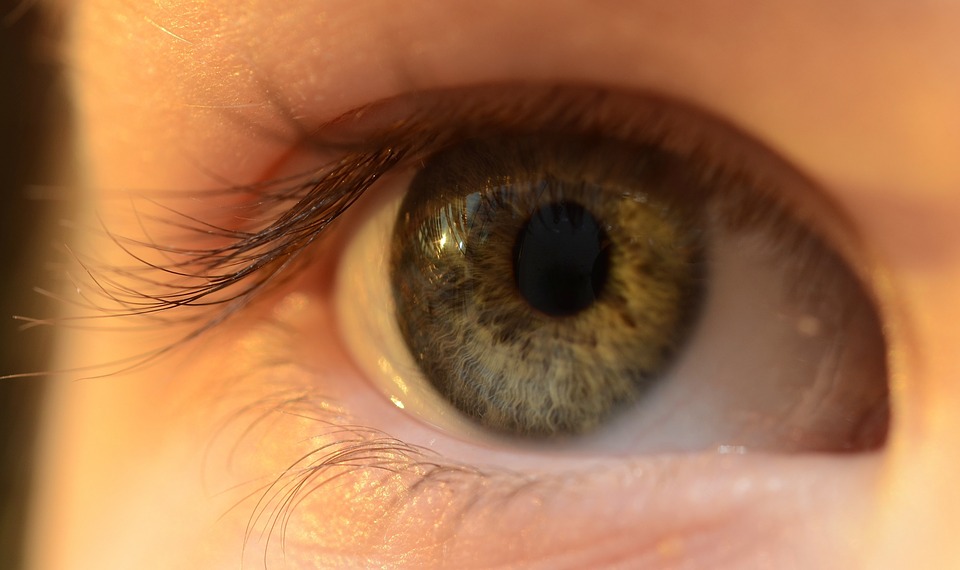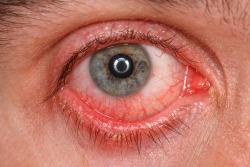Common Eye Issues Explored
As with all other organs, the eyes are prone to incalculable disorders and illnesses. Oftentimes these diseases are common and benign, but there’s always a chance they could be sight-threatening. In this article, we’ll highlight a few prevalent eye issues that optometrists see on a regular basis. By the time you finish this piece, you should have a good understanding of the basic eye conditions and learn a few things you could do to reduce symptom severity.
Of course, this list shouldn’t be used as a substitute for proper care from a trained optometrist. If you have any questions about your particular symptoms, schedule an appointment with an eye doctor.
Dry Eye Syndrome: A Modern Epidemic

Thanks in large part to the prevalence of electronic screens, dry eye syndrome has become increasingly common in the UK. Indeed, recent data published in the British Medical Journal found that at least 6.4 million prescriptions for dry eyes are filled every year in England alone.
There are many potential reasons a person could develop dry eye syndrome, but it usually has something to do with the Meibomian glands. Situated on the eyelids, these glands are primarily responsible for producing an oily substance called meibum, which keeps your tears from evaporating. Although it’s not always the case, many people who have dry eye syndromes have issues with both meibum production and secretion.
Usually people with dry eye syndrome experience symptoms such as itchy eyes, red eyes, and temporarily blurred vision. In more severe cases, patients might feel eye burning, photophobia, or eye pain.
There’s no cure for dry eye syndrome, but there are many therapies patients can try to reduce the severity of their symptoms. For instance, optometrists recommend patients experiencing uncomfortable eye symptoms place a warm compress or a damp cloth over their eyes for a few seconds. Doctors might also recommend taking omega-3 supplements, getting more natural sunlight, and limiting electronic screen exposure.
Because contact lenses cut off the oxygen supply to the cornea, contacts wearers are more prone to developing dry eyes. To minimize this risk, eye doctors strongly recommend patients use daily disposable contact lenses. Not only will these lenses reduce your risk of eye infections, but they have also been shown to be the most comfortable form of contacts on the market. Of course, following good contact lens hygiene is also a must to help avoid eye issues like dry eyes.
For quick symptom relief, it’s OK for dry eye patients to use over-the-counter artificial tears or re-wetting drops from time to time. Just keep in mind that the more frequently you use these tears, the more difficult it will be for your eyes to produce tears on their own.
As a final word of warning, don’t purchase decongestant eye drops for dry eye syndrome. Decongestant drops are developed to reduce the appearance of eye redness. To achieve this goal, these eye drops use special chemicals that constrict your eyes’ blood vessels. So, your dry eye symptoms may get worse if you use decongestant drops.
Stop Staring At Those Screens – Computer Vision Strain
Somewhat related to dry eye syndrome is a new disorder called computer vision strain (CVS). As you can guess from the name, this disorder is related to prolonged electronic screen exposure. The symptoms CVS patients experience are the same as dry eye syndrome, but CVS sufferers tend to have healthier Meibomian glands.
Obviously, the best way to avoid CVS is to avoid computer screens as often as possible. Ideally, you should look 20 feet away from screens for about 20 seconds after 20 minutes of usage. This simple habit, known as the 20-20-20 rule, will help your eyes naturally re-moisturize, which will reduce your chances of developing full-blown dry eye syndrome.
The Most Common Eye Infection: Conjunctivitis

Better known as “pink eye,” conjunctivitis is an eye infection that could be caused by an allergic reaction, bacteria, or virus. The formal name of this disease could literally be translated to an “inflammation of the conjunctiva,” which refers to a clear tissue that wraps around the outer eye.
A major warning sign of “pink eye” is…well, pink eyes! Other standard conjunctivitis symptoms include eye itchiness, eye pain, and, in more serious cases, eye discharge.
Thankfully, conjunctivitis is one of the easiest eye infections for doctors to treat. People with the allergic form of this disorder usually get over conjunctivitis after a week with plenty of rest and hydration. More serious viral forms of conjunctivitis, however, might require prescription medications.
Keep in mind that conjunctivitis is highly contagious, so it’s very important to refrain from rubbing your eyes and wearing contact lenses while you have this disease. Please wash your hands frequently and immediately change any bed sheets or towels you use on your face.
Eye Redness: Subconjunctival Haemorrhage
The name subconjunctival haemorrhage might sound serious, but almost everyone has experienced this issue from time to time. Basically, subconjunctival haemorrhages are ruptured blood vessels in the conjunctiva that cause unsightly eye redness. Although they’re not pleasant to look at, these haemorrhages usually fade away within a few days.
Please note that you shouldn’t feel pain if you have a subconjunctival haemorrhage. If you do feel eye pain, then visit your eye doctor as soon as you can.
A few potential causes of subconjunctival haemorrhages include lifting heavy weights, constipation, frequently rubbing your eyes, and intense sneezing. People with certain conditions like diabetes and high blood pressure are at a greater risk of developing subconjunctival haemorrhages.
There are decongestant drops on the market that reduce eye redness, but most optometrists recommend avoiding these products if you have a subconjunctival haemorrhage. The vasoconstrictors used in decongestant drops might temporarily reduce eye redness, but it comes at the cost of damaging your blood vessels. Instead, it’s best to simply wait for these subconjunctival haemorrhages to clear away on their own.
No, You’re Not Going Crazy: Eye Twitching
Like subconjunctival haemorrhages, eye twitching is a symptom that causes many patients unwarranted distress. These “eye twitches” are usually caused by some kind of involuntary muscle contraction within the eyelids. Typically these twitching episodes last just a few moments and could recur over a few days or even weeks.
People who suffer from anxiety and/or have heightened stress levels tend to experience more of these eye twitches. Other reasons you could be experiencing this symptom include too much caffeine, insomnia, or an allergic reaction.
To successfully cure eye twitches, you need to identify the cause of your disorder. It’s only recommended you see an eye doctor about these twitches if they cause you serious distress and/or pain.
Those Annoying Floating Strings: Eye Floaters
Eye floaters refer to those tiny specks and strings that may cross your field of vision on occasion. What we see as string-like marks are actually tiny fibers that break away from a structure known as the vitreous humor. Located right behind the lens, the vitreous humor’s main job is to protect important tissues like the retina from traumatic blows.
People who have conditions that involve heightened eye pressure (e.g. glaucoma) tend to have more eye floaters than people with healthy eyes. It’s also more common for patients over the age of 50 to develop eye floaters, but there are cases of children and teens experiencing these symptoms.
What is considered a high eye pressure? Eye pressure above 21mmHg is labelled as high and your eye doctor would need to monitor how this changes. An Eye pressure of 40mmHg or above is very dangerous and vision loss could be experienced.
Ophthalmologists rarely recommend surgical interventions for eye floaters. The best way to deal with eye floaters is to practice basic eye hygiene, which means avoiding rubbing your eyes, wearing UV-blocking eyeglasses, and reducing electronic blue light exposure.
While these eye floaters are usually harmless, it’s a good idea to visit an optometrist just to be sure these floaters aren’t signalling a more serious eye disease.
See An Optometrist For Eye Health Concerns
While the Internet has many wonderful features, it’s no substitute for seeing a real eye doctor. As mentioned in the intro, we’ve only gone through a few of the more common eye conditions in this piece. It’s highly likely you’ll experience at least one of these issues in your life, so you should be aware of the warning signs.
The best way to preserve your eye health is to visit an optometrist at least once every two years. At your vision exam, don’t be afraid to mention any symptoms you have concerns about. For more information on how to find an optometrist in the UK, please visit this NHS-sponsored webpage.
Don't forget, if you have any worries or concerns, or need further information speak to your optometrist, or you can check out our Eye Help pages, which are available to everyone, however, if you order lenses from us, you will have access to our contact lens aftercare pages, and our optometrist from within Your Account
Author: John Dreyer Optometrist Bsc(Hons), MCOPTOM, DipCLP
Created: 19 May 2023, Last modified: 7 Jan 2025

